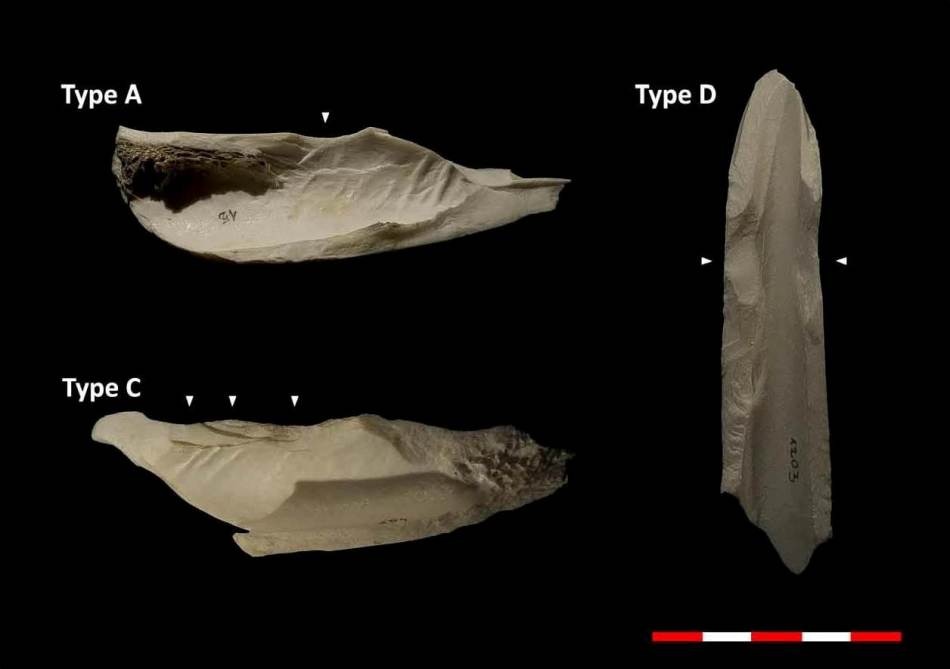Mar 18 2019
An experimental research led by scientist Abel Moclán, from the Centro Nacional de Investigación sobre la Evolución Humana (CENIEH), has recently been published in the Archaeological and Anthropological Sciences journal, which suggests a new technique to comprehend how the faunal assemblages were created in archaeological sites, and how they could have interacted with groups of carnivores and humans in the places they occupied.
 Three examples of the different types of notches. (Image credit: A. Moclán)
Three examples of the different types of notches. (Image credit: A. Moclán)
This new technique encompasses the use of artificial intelligence and machine learning algorithms to decode whether faunal assemblages were produced by carnivores or hominids, particularly hyenas and/or wolves.
Thanks to this method, we can discern among the acting agents with a certainty of over 95%.
Abel Moclán, Researcher, CENIEH.
To conduct this study, bone fractures have been studied so as to deduce whether they were fractured by human groups to eat the bone marrow, or if, on the contrary, the carnivores broke the bones when attempting to get this same resource.
This technique can be used as a commencement point in Taphonomy when examining remains in sites whose preservation does not allow differentiating who amassed the assemblages through the examination of the tooth marks or cut left on the surface of the bones.
“The future of Taphonomy involves using increasingly powerful statistical tools, like the ones we use here,” says Abel Moclán.
Manuel-Domínguez-Rodrigo of the Complutense University of Madrid (UCM) and the Institute of Evolution in Africa (IDEA), and José Yravedra of the Complutense University of Madrid (UCM) have also contributed to this research entitled “Classifying agency in bone breakage: an experimental analysis of fracture planes to differentiate between hominin and carnivore dynamic and static loading using machine learning (ML) algorithms.”